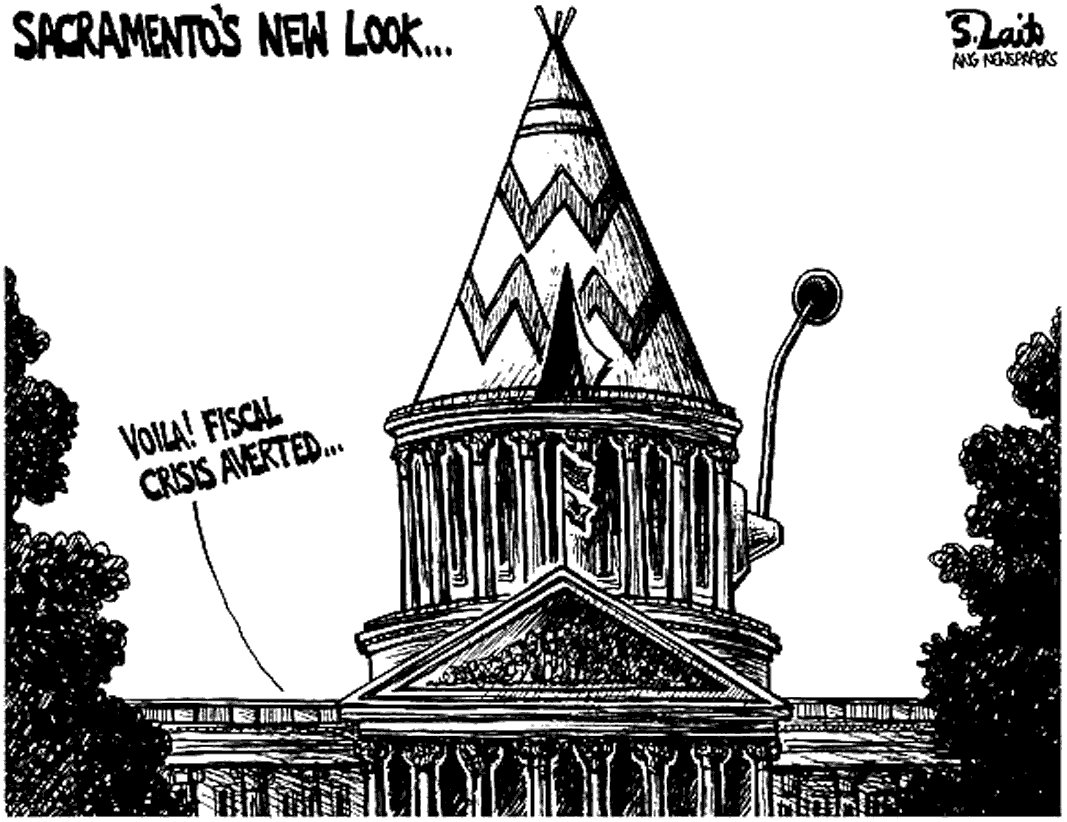
September 03, 2006
Indians get framed
Why Media Matters: Indian Gaming in the NewsThe analysis of news headlines and news content from the 1990's reveals a patterned framing shift in the media coverage of Indian issues. As mentioned earlier, in 1990, Indian nations were portrayed as cultural and religious groups who were of media interest because of their history and tenacity. Readers were encouraged to learn more about the tribes and there was a sympathetic tone to stories that documented historical atrocities. Over time, stories about Indian nations began to focus more on tribal sovereignty and the fact that Indian nations were sovereign cultural groups. Later, sovereignty becomes portrayed in the media as an attribute of tribal governments and there is an emphasis on gaming rights as the primary expression of tribal sovereignty. More recently, Indian nations are "framed" almost exclusively through their relationship to gaming. Even those Indian nations that do not engage in gaming are defined as "non-gaming" tribes, meaning that their identity (to outsiders) is ultimately expressed through their relationship to gaming even if they do not have a gaming facility. Indian gaming stories now focus almost exclusively on economic and social issues, in particular the ways Indian nations are investing their money. Indian Nations are framed as political groups or interest groups who use their gaming revenues to make political contributions, implying that this is somehow unfair or unusual. For more on the subject, see Native Journalism: To Tell the Truth.



I read the article first, finding that it made some interesting points. Then I looked at the top and found that this page was published by the Indian gaming industry itself. The obvious financial interest calls into question its veracity. Do we use the Tobacco Institute as the best source for articles on the tobacco? Or, to use a much more benign and less controversial example, would be be wise to take press releases on bicycle helmets that come from the bicycle helmet industry with a grain of salt? There is an obvious financial interest in all of these press-release situations.
ReplyDelete(disclaimer to above: I'll be the last to bash casinos or Native-run casinos. I hold the positive views of the industry mentioned as examples in the article itself. I just don't think official industry publications are the best places to get such information about issues of controversy. No matter what the industry is!)
ReplyDeleteConservatives worship Reagan even more than they worship Bush, so I'm sure they still want him on Mt. Rushmore. They'd also like to put him on the $10 bill in place of Alexander Hamilton.
ReplyDeleteKate Spilde, the author, has worked for the gaming industry before, but she's also a professor. Her research may be suspect, but it isn't necessarily bought and paid for by NIGA. I could be wrong, but I think she wrote it for some publication and the association reprinted it.
Besides, it was mainly an opinion piece, not a scientific study. It wasn't as if she was claiming to be objective when she had a hidden agenda. Her agenda is out in the open: She's pro-Indian and pro-gaming, just like me.
Anyway, I've posted a lot of links on gaming and journalism, so I don't expect anyone to rely on this article alone. Read them all and judge them for yourself.
If any of the dollar bills need to be changed, why not the 5? Is there really much good to be said about Jackson compared to all the villainy?
ReplyDeleteLincoln's on the $5; Jackson's on the $20. I've heard Native people say the federal government put Jackson on our currency deliberately to insult them. I don't buy that. He did do some good things, such as win the war of 1812.
ReplyDelete